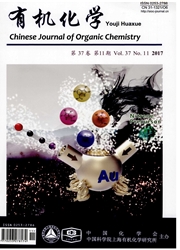

 中文摘要:
中文摘要:
选择自然布局分析(NPA)电荷、Hirshfeld电荷、分子范德华表面1.6?处的静电势、最低未占据轨道(LUMO)成分、分子范德华表面1.6?处的平均局部离子化能、简缩福井函数和简缩双描述符来预测芳香族化合物亲核加成、亲核取代和亲电反应的活性位点,并分析理论预测结果和实验反应速率之间的相关性.发现这些方法都能准确地预测反应的活性位点.还发现不管对亲核反应还是对亲电反应,体现局部电子硬度的方法,如Hirshfeld电荷和分子范德华表面1.6?处的静电势,其预测结果的大小能较好地反映实验反应速率的相对大小,而体现局部电子软度的方法,简缩福井函数和简缩双描述符,其预测结果和实验反应速率的相关性较小.
 英文摘要:
英文摘要:
Natural population analysis (NPA) charge, Hirshfeld charge, electrostatic potential, average local ionization energy, orbital composition of lowest unoccupied molecular orbital (LUMO), condensed Fukui function and condensed dual descriptor were exploited to predict the reaction active sites of nucleophilic and electrophilic reactions of aromatic compounds. It was found that the predicted reaction sites of these methods were all in consistent with the experimental results. It was also found that the correlations of the prediction results of theoretical methods reflecting local hardness such as Hirshfeld charges and electrostatic potential with the experimental reaction rate were excellent no matter the reactions of aromatic compounds are nucleophilic or electrophilic. However, the prediction results of theoretical methods reflecting local softness such as the condensed Fukui function and the condensed dual descriptor were in poor correlation with the experimental reaction rates as unexpected.
 同期刊论文项目
同期刊论文项目
 同项目期刊论文
同项目期刊论文
 期刊信息
期刊信息
